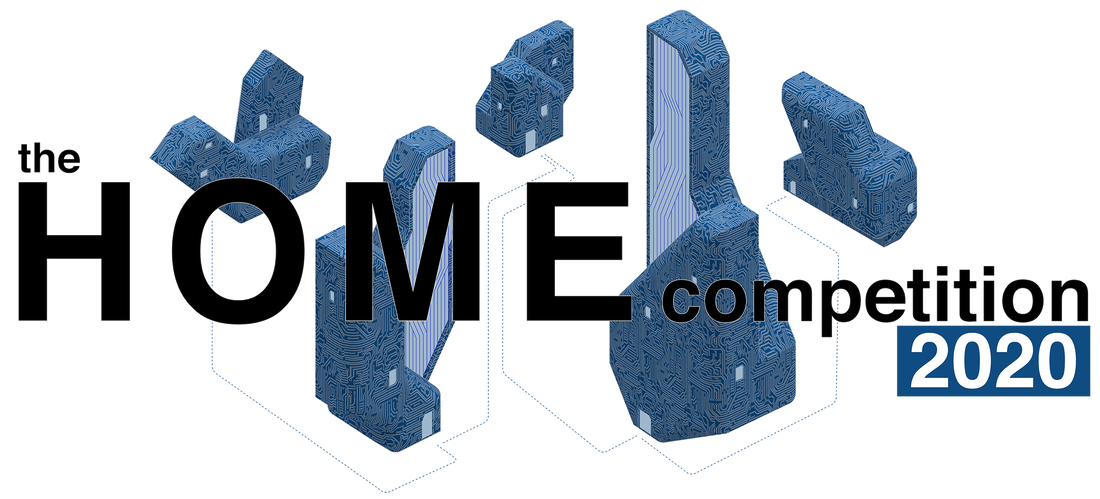BRIEFHow do we define “home”? Although our ideas about home are constantly being rethought, the careful examination of “home” has recently come to our attention for architects and nonarchitects alike. Almost everyone has had to confront their perspective of “home” as they have adapted work places, social gatherings, fitness routines, and everyday life. We now not only internalize a home, but look at how our homes digitally connect to the rest of the world.
Nonetheless, “home” remains the most significant architectural place we experience throughout our lives. Home represents safety, ownership, privacy, and stability. Home is where we can be alone and with people we care about most. Historically, the home has been a place of permanence. Despite how chaotic our lives are, we cherish the consistency of sleeping in the same bed and performing the same daily rituals here. Through the ages, architects have continuously investigated the role that homes play in our lives. These investigations present us with new notions of home environments that completely rethink the home, like Peter Eisenman’s House VI or Kurokawa’s Nagakin Capsule Tower, and sometimes rethink specific things within a home, like the elevator in OMA’s Maison Bordeaux. The HOME competition invites all designers to explore ideas of domestic architecture for the future. Designers may consider the impacts of global population shifts, proximity of major cities to coastlines, new materials and building techniques, as well as the rise of co-housing, tiny homes, smart houses and marketplaces like Airbnb. HOME creates a platform to speculate the ways new technological, political, environmental and cultural changes can redefine the spaces where we live. What do you believe will be the future of home? |
GUIDELINESSubmissions may propose a single family home, a multifamily building, an adaptable structure, temporary living experience, or a home that takes the shape of any model or scale. All submissions should clearly define how a resident or residents interact with the proposed living space through graphic representation, text summary, or both.
Designers may propose any geographical location for their home design but should consider the relationship between their proposal and its site, taking into account the inherent benefits, drawbacks, and unique characteristics. Additionally, designers can propose homes with no defined site. Submission Materials: (4) 12″ x 12″ (30.48cm x 30.48cm) graphic representations and (1) 12" x 12" project text summary (under 200 words) submitted as a combined PDF document. Graphic representation boards may not include text other than number labels (ex. ① ② ③). Graphic boards will be reviewed by jury members alongside their respective text summaries, where number labels may be defined. Upon competition results, all recognized proposals will appear with the text summary directly beneath graphic representations. |
JURY
|
|
SCHEDULE
FAQCan text be included on the four graphic boards?
Text is not permitted on graphic boards aside from number labels (example: ① ② ③). Number labels included on graphic boards may be defined on the project text summary board. Boards will be reviewed by jury members alongside their respective text summaries. Can I submit a project that was done in a school studio? Yes; participants are welcome to submit projects that were done in school as long as they meet the requirements of the competition. Can I submit a project that was submitted to another competition? No; participants are not allowed to submit a project that was also submitted for a different competition which ends before the results of HOME Competition 2020 are announced. Is the HOME competition restricted to only students or only professionals? The competition is open to all designers, no matter age, location or experience. Where do I get my team number? Your team’s identification number is the order number that appears on the top right of the confirmation email upon registration. The confirmation is only sent to the email provided during the payment. How many team members can be involved in my project? A maximum of four team members is permitted. Can I change team members after I register? Teams are welcome to add, remove, or swap team members as long as their total members does not exceed four. Is the HOME competition judged anonymously? All HOME proposals are reviewed anonymously by the competition jury. Upon registration each team receives a randomized numeric code (ex. 2947502), this code is the only mean by which boards are identified. For more information see terms and conditions. |














